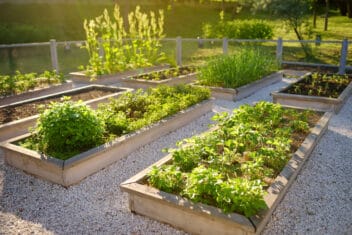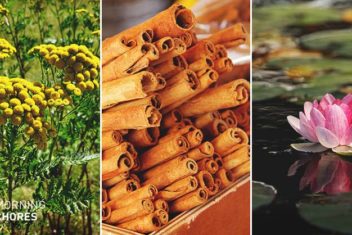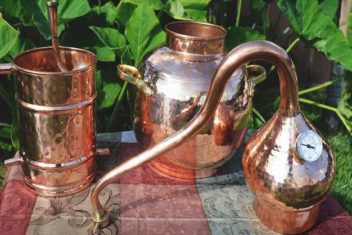Winter is a great time of year for a lot of reasons, but if you’re passionate about gardening and the great outdoors, you might be struck by the winter blues when the cold weather rolls around. That’s where making a winter nature journal can help.
Although winter seems cold and lifeless sometimes, there’s still a lot going on. Plus, it’s the ideal time to start planning for the coming growing season.
A winter nature journal is an excellent way to keep busy, plan ahead, and embrace the beauty of winter.
Here’s how to make the most of winter with a nature journal.

Choosing a Winter Nature Journal

Similar to other journals, a winter nature journal is a way to capture changes in the landscape, record new species that you encounter, and reflect on the shifting world around you.
It’s also a great place to record your goals, dreams, and plans for the coming growing season.
The first step is finding the perfect journal for writing and drawing. You can find various options online or at a local store. Some journals have lines to guide you if you’re big on writing, or you can choose one with big blank pages of art paper if you prefer to draw.
Or you can find journals that let you do both.
Some have prompts to guide you, and others are entirely blank you can let your imagination run wild.
Choosing a Focus
After you have your winter nature journal, there are several ways to figure out how to fill it.
Research topics that you don’t have time for or that you can only enjoy in the warmer months. Want to know more about the winter stars? Add that to your list. Curious about when the various tree species drop their leaves? Add that too.
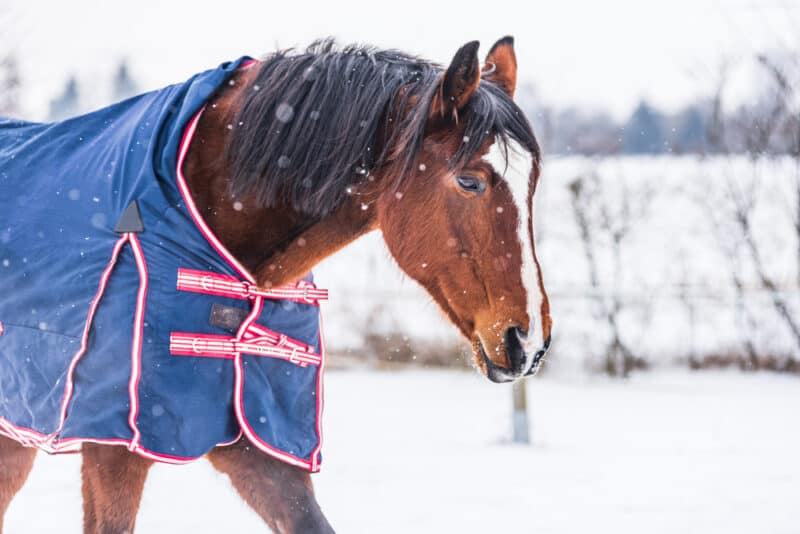
You can track the weather, the timing of when plants go dormant and re-emerge, how your horses behave, chicken molting, how much your cattle eat, how much milk your goats produce, notes on recipes you made this year, and more.
Don’t forget to keep track of the health of your houseplants or indoor crops if you have any!
If you want to encourage local wildlife to visit your garden, you can track how your efforts to entice them are going. Or maybe just note or draw those species that come wandering around your neck of the woods.
You might use a different journal for each topic or you can just put everything down in one. There are no rules, here.
Here are some specifics on how you can track these various topics:
Observing the Winter Sky

In winter, you can learn about the circumpolar stars and watch out for meteor showers. This excellent opportunity to practice night photography and sketch from the night sky.
There’s no denying that winter is a fantastic time for observing the sky in many areas of the country. The cold air makes the stars and planets in the sky more clear.
The winter solstice occurs around the 21st or 22nd of December, depending on where you live. This is when the sun is at its lowest point in the sky, so you have lots of dark hours to make your observations.
Record the moon phases and observe the locations where the sun rises and sets in the day.
Plus, did you know that you can see multiple meteor showers during the winter? The Geminids, Ursids, and Quadrantis all occur during the winter months.
Drawing in the evening with a warm fire and hot drink is the perfect way to spend a winter’s evening.
Monitor Your Houseplants and Indoor Crops

Another way to nature journal in the winter is to walk around your home and pick plants or flowers to sketch. This is an excellent option if the weather is freezing or you can’t get outside to see much of nature.
Note how much water your houseplants are consuming, whether they’re blooming or not, if you’re seeing any pests or diseases, or just take some time to draw up a sketch of how your plant looks in the soft winter light.
Make notes of when you start any seeds and how long they take to germinate. It can also help to write down how much sun they receive and what the temperature is. That way, you can adjust things next year if it seems that your seeds aren’t doing as well.
Tracking these sorts of changes from year to year gives you valuable information that you can learn from to improve your plants next year.
If all else fails, grab some produce and equipment from your kitchen and put them together for a still-life painting. This will give you some practice with your art skills, and you can examine different fruit and vegetables with your kids.
Outdoor Plant Studies
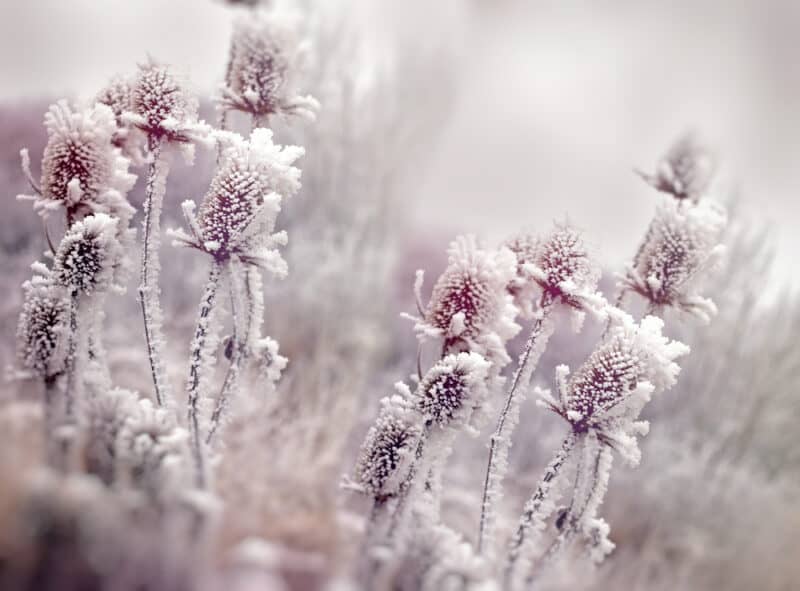
Many plants go dormant in winter, but that doesn’t mean you can’t still watch how they evolve and change. Winter is a good time to observe evergreens and seedheads.
Some of the most resilient winter plants are thistles, chicory, and burdock. So, if you have a good moment when the weather is mild, you can go outside and look at these plants for your journal.
You can also explore the different types of evergreens. For instance, you can compare the differences between pine, fir, and spruce. It’s a handy distinction to be able to make, and it can be easier during the winter when cones are present.
Take a look at other plants that are shifting and evolving right now. Camellias are just starting to bloom, hellebores might be starting to bud, and your rhododendrons are probably getting ready to put on a show.
Drawing winter plants is especially useful if you want to practice line drawing or charcoal designs that aren’t focused on color. If you don’t want to draw the evergreens, you can dip a branch in paint and press it onto a page to make a stamp.
Record Winter Crops
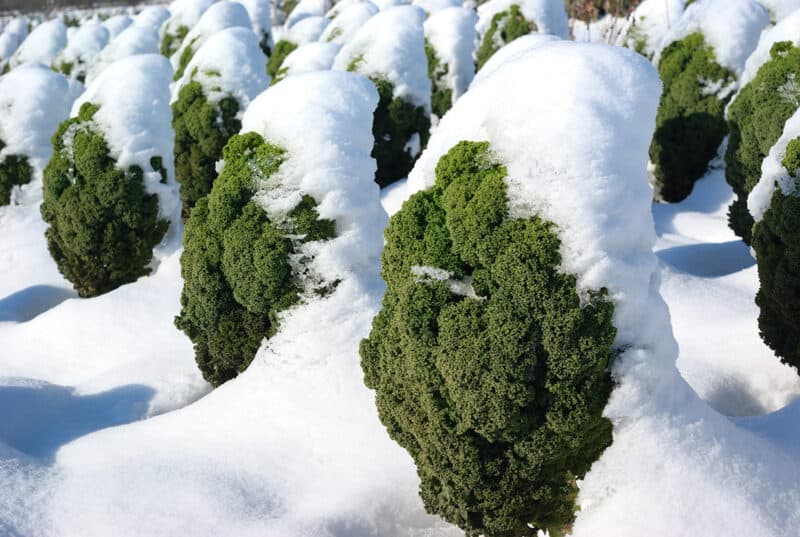
If you plant winter crops, it can make a world of difference if you keep track of how they’re growing. Keep records of when you plant something and when you harvest it. Note if you have a cold snap and your winter kale looks worse for wear.
Or keep track of the temperatures and rain volume to determine why your chard looks so fantastic this year.
It’s also handy to note any maintenance you have to do on greenhouses or hoop structures and to observe how the sun changes throughout the year. A part of the garden that might have been in full sun during the summer might be completely in shade during the winter.
Watch Winter Animals
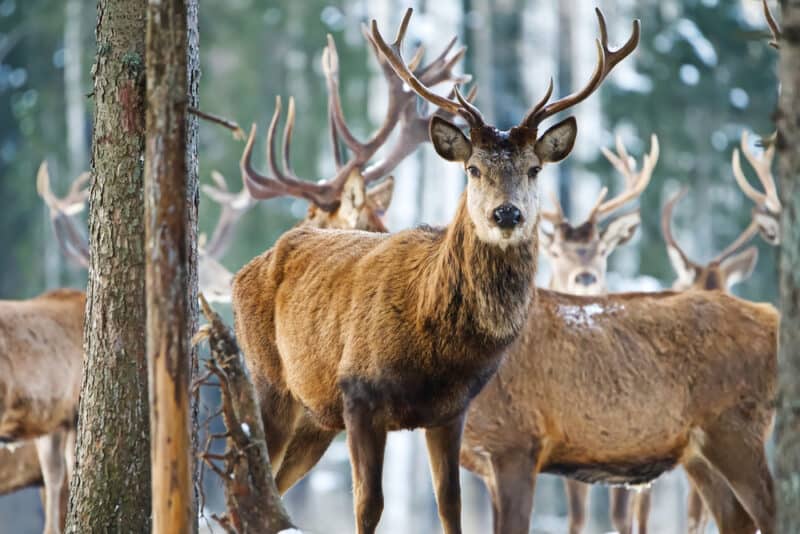
As with plants, winter is the time for some animals to hibernate, so you don’t see quite as many running around when the temperatures drop. Wood frogs, turtles, and other animals hibernate by burrowing deep into the mud.
The most famous hibernating animal is the bear, but bats, amphibians, chipmunks, and some birds do, as well.
But other animals are active during winter. Here are the animals you can expect to see during the cold season:
- Deer
- Foxes
- Mice
- Red/gray squirrels
- Some birds
- Otters
- Beavers
- Weasels
- Rabbits
- Hares
- Skunks
- Raccoons
If you live near woodlands, parks, or forests, you have plenty of opportunities to watch wildlife and add notes or drawings in your winter nature journal.
Observe animal eating habits and how they store food. Mice and squirrels like to stockpile their food for the winter, so you might see them running around with nuts in their mouths. Write about watching a hawk hunt or a fox diving into the snow for a meal.
You don’t have to find active animals, though. Look for trails and sketch the prints in the snow or mud.
Or bring the wildlife to you. Place a bird feeder near a window. Keep a camera or phone with you so you can take a snapshot and refer back to it as a reference picture.
This allows you to observe the details of the birds long after they fly away.
Pets also make excellent life models for drawing. If you have a willing pet that will stay still for a while, you can give it a go and see if you can capture the personality of your dog, cat, or another animal friend!
Take a Field Trip
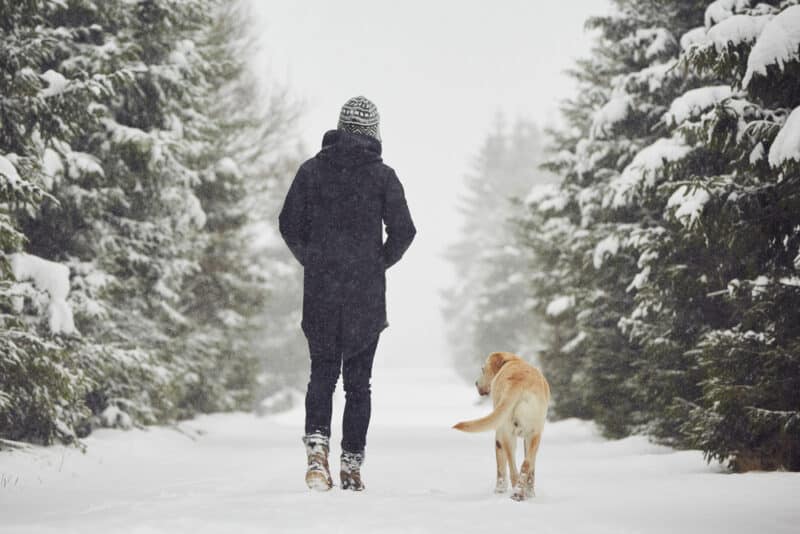
Even though the weather might be cold in winter, that shouldn’t stop you from taking a field trip and exploring new spaces to add to your nature journal. You can look up the local facilities open over winter and offer a heated room for sketching and writing.
Here is a list of some of the most common places to visit at this time of the year:
- Aquariums
- Natural history museums
- Zoos
- Indoor art exhibitions
- Conservatories
Often, you can also find family deals to take your entire family. Or, if you need some time away, grab your sketchbook and go to a local museum.
Depending on where you live, you can also go on a winter hike if the weather allows it. You can take a backpack of blankets and food and make a fire to observe the surrounding environment.
This way, you can practice drawing and writing while you watch nature as it goes on about its day.
A hand-drawn map is a great way to keep track of your discoveries!
Plan Ahead

You don’t have to plan your coming year, but why not? It’s such an effective way to get a head start on the gardening season, especially since you can’t do much while the ground is hard and frozen.
Plan out when you intend to start indoor crops and when you’ll put things in the ground outside.
Look through seed catalogs and make note of what you intend to buy, where you intend to plant it, and when.
You can also look at previous journals to see what worked last year and what didn’t. Then, make notes on how you intend to change things in the future.
Decorate Your Journal

The last tip for making a great winter nature journal is decorating and making it unique. If you want to make journaling a permanent part of your year, you can make an index and include highlights from previous years.
This allows you to make comparison notes and see what’s different from year to year. You can also number the pages for efficiency, bind the book with ribbon, and add stickers to individual pages.
Or, if your journal is more of the recording and tracking kind, just leave it plain. Remember, there are no rules. Except for this one.






